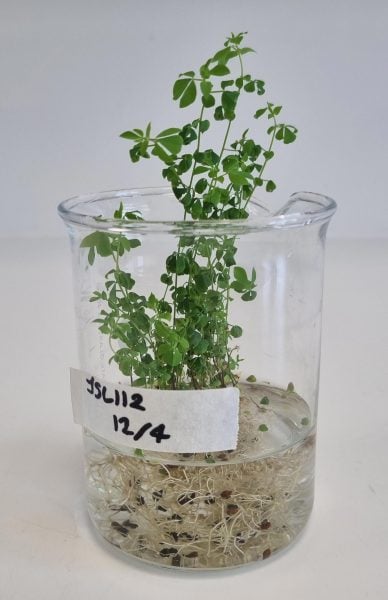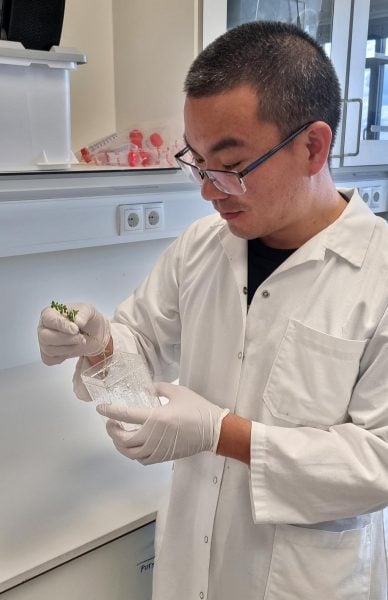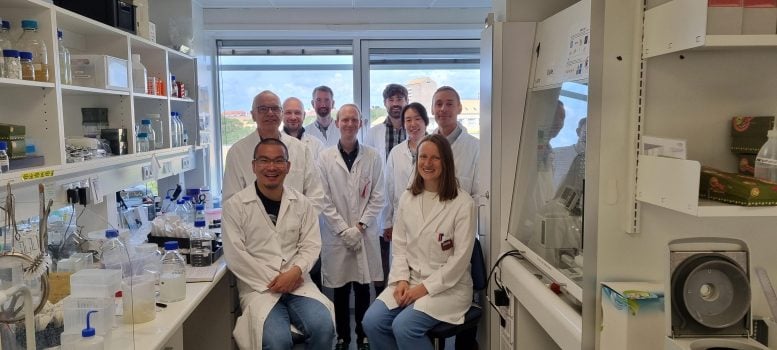A new study reveals a critical role for zinc in regulating nitrogen fixation in legumes through a sensor called FUN. The discovery could help improve crop efficiency and reduce the use of synthetic fertilizers by adapting to environmental and soil conditions.
Researchers have found that zinc significantly affects the process of nitrogen fixation in legumes, a discovery that could transform legume-based agriculture.
Climate change, drought, increased temperature and other stressors challenge the sustainability of agriculture. Scientists have now made an unexpected discovery: zinc plays a key role in plant response to abiotic stress. This ground-breaking discovery not only sheds light on the complex mechanisms of plant growth, but also promises to revolutionize crop resilience, especially in legume-based agriculture.

Lotus japonicus. Credit: Helene Eriksen
Discovery of the role of zinc in nitrogen fixation
Scientists have revealed the essential role of zinc in the process of nitrogen fixation in legumes. This discovery, coupled with insights into a transcriptional regulator known as Fixation Under Nitrate (FUN), has the potential to transform legume agriculture by increasing crop efficiency and reducing reliance on synthetic fertilizers. By delving into the mechanisms by which zinc and FUN control nitrogen fixation, researchers aim to increase nitrogen availability, improve crop yields, and promote greener agricultural practices.
Legumes form a symbiotic relationship with rhizobia bacteria, which fix atmospheric nitrogen in the root nodules. However, these nodules are sensitive to various environmental stresses such as changes in temperature, drought, flooding, soil salinity, and elevated soil nitrogen levels.
Breakthrough in plant micronutrient sensing
Researchers from Aarhus University, in collaboration with the Polytechnic University of Madrid and the European Synchrotron Radiation Facility in France, found that legumes use zinc as a secondary signal to integrate environmental factors and regulate nitrogen fixation efficiency. In a study published in Natureresearchers discovered that FUN is a new type of zinc sensor that decodes zinc signals in nodules and regulates nitrogen fixation.
“It is truly remarkable to discover the role of zinc as a secondary signal in plants. It is a vital micronutrient and has never before been considered a signal. After examining more than 150,000 plants, we finally identified the FUN zinc sensor, which shed light on this fascinating aspect of plant biology,” explains Assistant Professor Jieshun Lin, first author of the study.

Jieshun Lin shows root nodules on Lotus japonicus. Credit: Helene Eriksen
Unveiling the functionality of the FUN protein
In this study, the researcher identifies that FUN is an important transcription factor that controls nodule breakdown when soil nitrogen concentrations are high: “FUN is regulated by a special mechanism that directly monitors cellular zinc levels, and we show that FUN is inactivated by zinc into large volumes. fibrous structures and release into an active form when zinc levels are low,” explains Professor Kasper Røjkjær Andersen.
Agriculturally, continued nitrogen fixation could be a beneficial trait that increases nitrogen availability, both for legumes and for intercropped or future crops that depend on nitrogen left in the soil after legume cultivation. This helps lay the groundwork for future research that gives us new ways to manage our farming systems and reduce the use of nitrogen fertilizers and reduce their impact on the environment.
Increasing the efficiency and sustainability of agriculture
The implications of this research are significant. By understanding how zinc and FUN regulate nitrogen fixation, scientists are developing strategies to optimize this process in legumes. This could lead to increased nitrogen supply, improved crop yields and reduced need for synthetic fertilizers, which have environmental and economic costs.
The researchers are now investigating the mechanisms of how zinc signals are generated and decoded by FUN. He is looking forward to applying these new discoveries to legumes such as faba bean, soybean and cowpea.

The research team gathered in laboratory facilities at Aarhus University. Credit: Helene Eriksen
Reference: “Zinc mediates control of nitrogen fixation through transcription factor filamentation” by Jieshun Lin, Peter K. Bjørk, Marie V. Kolte, Emil Poulsen, Emil Dedic, Taner Drace, Stig U. Andersen, Marcin Nadzieja, Huijun Liu, Hiram Castillo – Michel, Viviana Escudero, Manuel González-Guerrero, Thomas Boesen, Jan Skov Pedersen, Jens Stougaard, Kasper R. Andersen, and Dugald Reid, 26 June 2024, Nature.
DOI: 10.1038/s41586-024-07607-6
This work was supported by the Enabling Nutrient Symbioses in Agriculture (ENSA) project, which is funded by the Bill & Melinda Gates Agricultural Innovations (INV-57461), the Bill & Melinda Gates Foundation, and the Office of Foreign, Commonwealth and Development Affairs (INV-55767). , Carlsberg Foundation (CF21-0139) and European Research Council (ERC) grant under the European Union’s Horizon 2020 research and innovation program (grant agreement no. 834221).
Jieshun Lin, Peter K. Bjørk, Jens Stougaard, Kasper R. Andersen and Dugald Reid are the inventors of the pending patent that captures these discoveries.